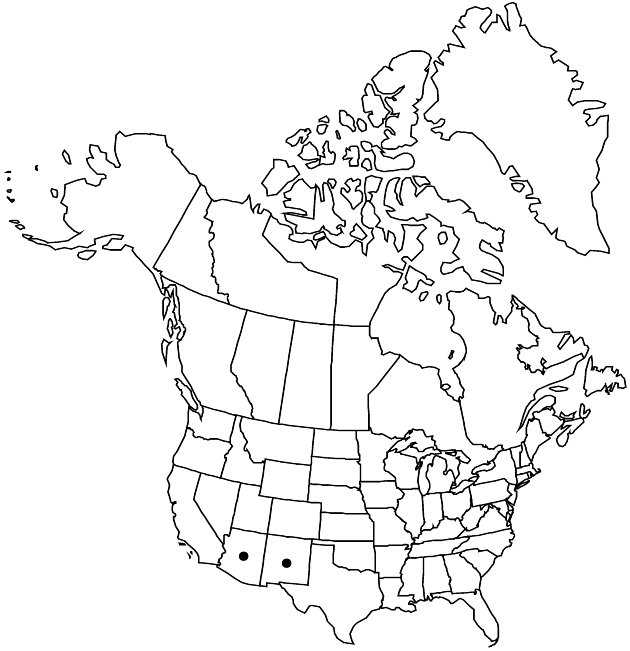Difference between revisions of "Packera quercetorum"
Kew Bull. 47: 101. 1992.
imported>Volume Importer |
imported>Volume Importer |
||
| Line 61: | Line 61: | ||
|publication year=1992 | |publication year=1992 | ||
|special status=Endemic | |special status=Endemic | ||
| − | |source xml=https:// | + | |source xml=https://bitbucket.org/aafc-mbb/fna-data-curation/src/2e0870ddd59836b60bcf96646a41e87ea5a5943a/coarse_grained_fna_xml/V19-20-21/V20_1339.xml |
|tribe=Asteraceae tribe Senecioneae | |tribe=Asteraceae tribe Senecioneae | ||
|genus=Packera | |genus=Packera | ||
Latest revision as of 21:00, 5 November 2020
Perennials, 60–100+ cm; taprooted (caudices subligneous, ascending to erect). Stems 1 or 2–4, clustered (proximally deeply purple-tinged, distally lightly tinged), glabrous or tomentose at bases and in leaf axils. Basal leaves (and proximal cauline) petiolate; blades obovate or lyrate (pinnately lobed, lateral lobes 2–6+ pairs, their bases petioluliform, terminal lobes larger than laterals, midribs narrowly winged), 60–160+ × 20–40+ mm, bases wide, ultimate margins sharply dentate, crenate-dentate, or irregularly incised. Cauline leaves gradually reduced (petiolate or sessile; shallowly lobed, midribs ± winged, distals bractlike, dentate to incised). Heads 15–40+ in open, cymiform arrays. Peduncles ebracteate, glabrous. Calyculi inconspicuous. Phyllaries (13–)21, green (tips yellow), 5–7 mm, glabrous (tips sometimes hairy). Ray florets (8–)13; corolla laminae 6–10+ mm. Disc florets 60–70+; corolla tubes 2–3 mm, limbs 3.5–4.5 mm. Cypselae 1.5–2 mm, glabrous or ± scabrellous; pappi 5.5–6.5 mm. 2n = 92.
Phenology: Flowering mid Apr–early Jun.
Habitat: Rocky soils, open areas, scrub-oak and pinyon-pine forests, chaparral
Elevation: 800–2200 m
Discussion
Packera quercetorum is found only infrequently and in relatively small populations in central and southern Arizona and west-central New Mexico. The plants are robust and have probable affinities to P. multilobata. The plants have a bluish tinge when freshly collected and are distinctive in the field.
Selected References
None.
